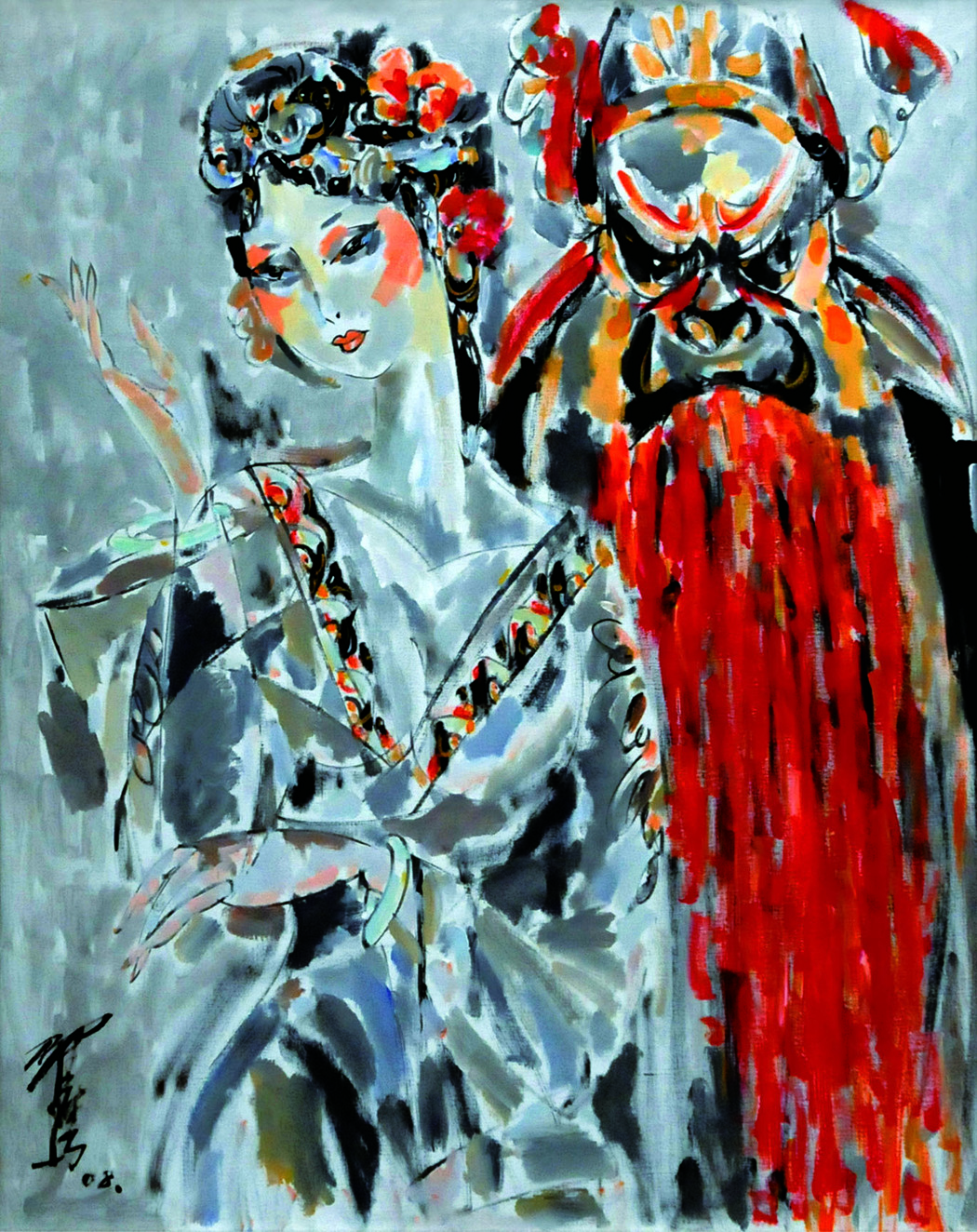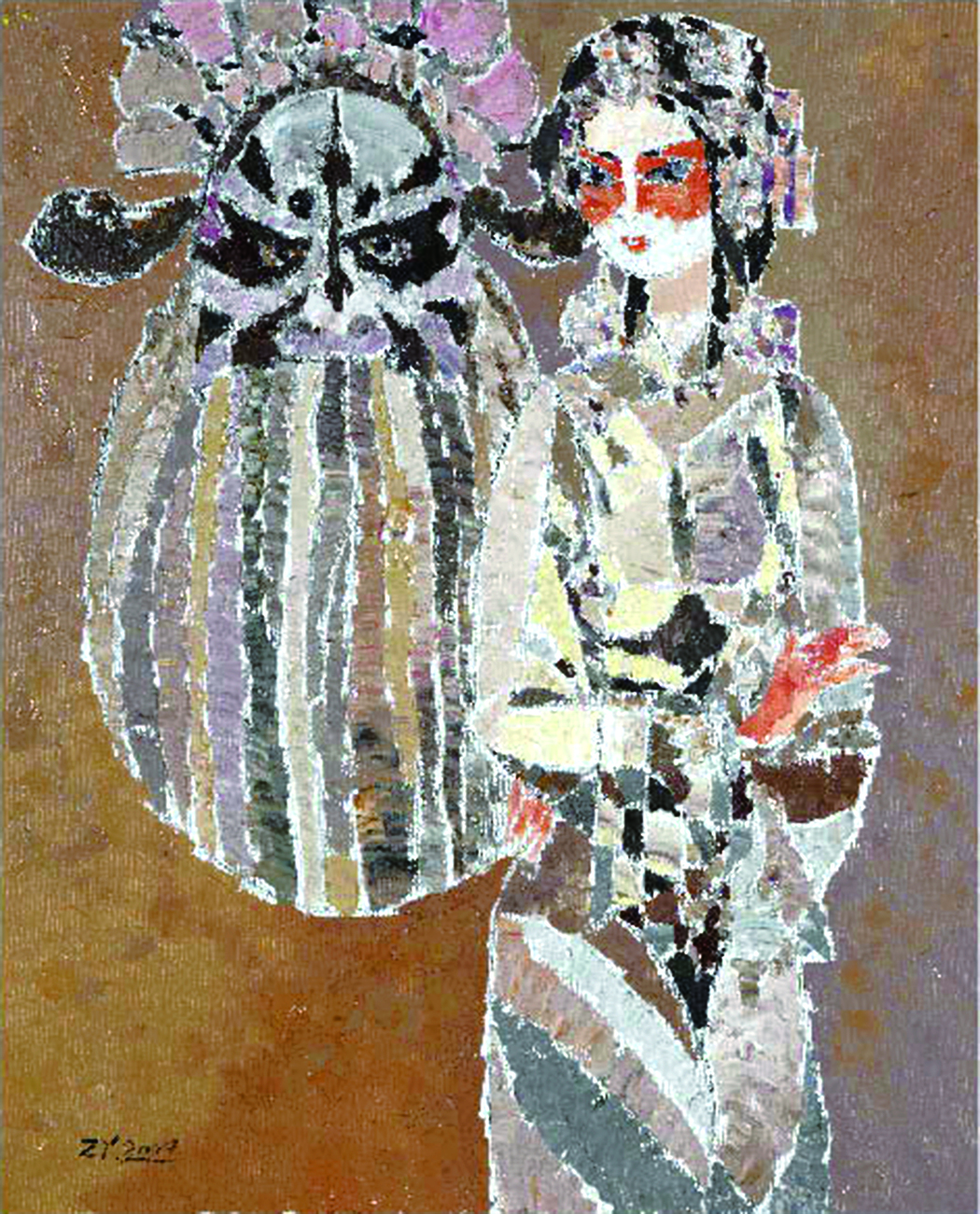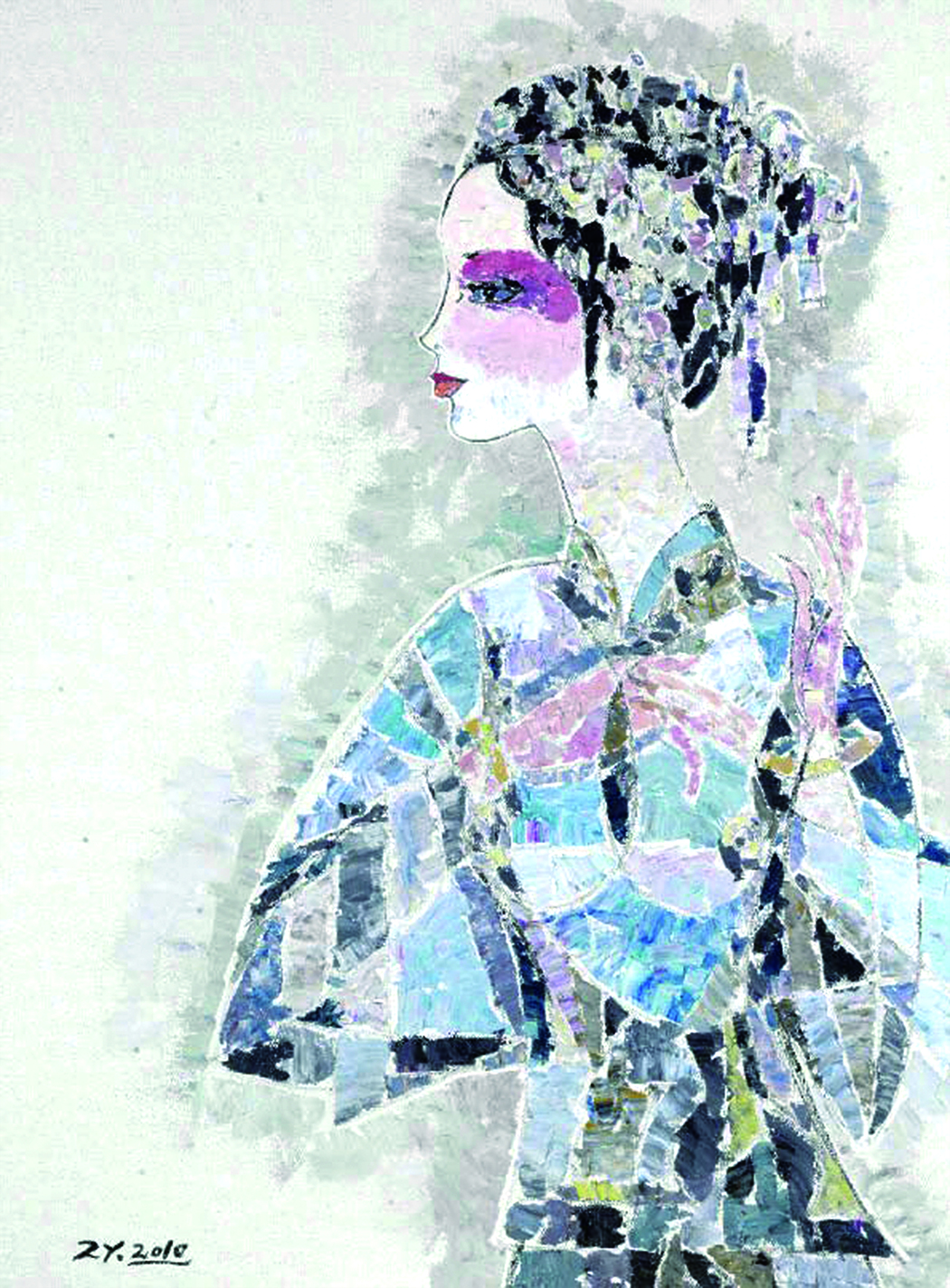Ying Zhai
Year of birth: 1963.
Where do you live: Beijing, China.
Your education: I earned my Bachelor’s degree from Beijing’s Central Academy of Fine Arts in 1988.
Describe your art in three words: My artistic practice can be distilled into three defining qualities: innocence, harmony, and aestheticism.
Your discipline: My professional focus centers on oil painting and illustration.

Your works often integrate traditional Chinese art with modern interpretations. Could you describe the process of blending these two elements in your paintings?
My motherland, China, boasts a 5,000-year historical civilization and splendid traditional culture. From childhood, I have cherished reading classical Chinese poetry and literary masterpieces, while also developing a deep appreciation for Peking Opera and Chinese calligraphy and painting. Decades of personal growth have deepened my passion for and understanding of traditional Chinese culture. As a contemporary artist living in the modern era, I naturally reinterpret these traditions through current perspectives and interpretations, particularly infused with strong personal subjectivity and preferences. Many of my artistic creations draw inspiration from traditional Chinese stories – this choice stems not only from my familiarity with these narratives, but more fundamentally from emotional resonance. These subjects inherently stimulate my creative sensitivity and interest, and over time have naturally evolved into an indispensable part of my artistic identity.
How does your background in fashion design and education influence your art practice, especially in terms of color and composition?
Though I teach at a fashion institute, my expertise does not lie in fashion design. My academic foundation is rooted in painting, with professional practice focused on oil painting and illustration, and my teaching centers on fine arts. Nevertheless, decades immersed in the creative atmosphere of a fashion institution have subtly shaped my perspective. Elements such as garment color coordination and trend forecasting have become intellectual nourishment, enriching my artistic practice in meaningful ways. For instance, I consciously blend contemporary fashion aesthetics with traditional motifs in my creative work, crafting a distinctive visual hybridity that amplifies the richness and tension within my compositions. This intentional fusion of temporalities—modern and historical—has evolved into a defining characteristic of my art, setting it apart from others.
 Ying Zhai | Zhongkui
Ying Zhai | Zhongkui
You have been involved in a variety of academic and professional associations. How do you balance your role as an educator with your own artistic practice?
My numerous academic honors stem from the publication of multiple scholarly monographs and personal art catalogues, active participation in significant artistic events, and the organization of several solo exhibitions that have garnered notable public recognition. Serving dual roles as both an art creator and educator, I cherish these complementary vocations that grant me amphibious versatility within broader creative ecosystems. Artistic practice and pedagogy exist in mutually reinforcing synergy – while solitary creation allows me to metabolize life experiences through introspective combustion, teaching rejuvenates me through dynamic exchanges with youth, mentoring emerging talents in knowledge transmission and conceptual exploration. This perpetual oscillation between contemplative isolation and pedagogical vitality injects tensile energy into my artistic evolution, sustaining an organic cycle where pedagogical insights fuel creative breakthroughs and vice versa, ultimately forming an autopoietic system that perpetually revitalizes my artistic vitality.
How does Chinese culture and history inspire your art? Do you incorporate specific cultural references, and if so, how do you decide which elements to include in your work?
China’s profound cultural legacy and accumulated wisdom have served as perennial wellsprings of artistic inspiration for me. Foundational aesthetic and philosophical principles such as “learning from nature while internalizing its essence,” “capturing vital rhythmic resonance,” “structural brushwork discipline,” “harmonizing form and spirit,” and “cosmic unity of heaven and humanity” have profoundly guided my artistic practice. Traditional mythology, historical narratives, and cultural memories further constitute an inexhaustible creative repository. My particular fascination lies in interpreting ethnic minority customs and old Beijing’s folk traditions – the vibrant street life and cultural particularities that pulse with authentic local character. My creative nourishment flows equally from Peking Opera’s stylized visual language and Dunhuang murals’ chromatic splendor. Their decorative compositions, flattened spatial treatments, and symbolic color palettes have organically permeated my creative process. Coupled with my habitual documentation of quotidian observations and emotional imprints, these diverse influences gradually synthesized into my distinctive artistic lexicon – a visual dialect that transmutes cultural inheritance through contemporary sensibilities, achieving what I perceive as an authentic personal aesthetic synthesis.
 Ying Zhai | Impression of Beijing opera
Ying Zhai | Impression of Beijing opera
As a professor of painting, what advice do you give your students about developing their own unique style in painting?
As a painting professor, I consistently counsel students to remain steadfastly faithful to their authentic emotional truth, letting genuine perceptions guide their journey toward artistic transcendence. I advocate resisting trends and eschewing imitation, urging them to emulate the principled paths of China’s Bada Shanren or the West’s Van Gogh – artists who guarded their artistic integrity like sacred soil. The imperative lies in preserving one’s creative sanctuary through disciplined devotion, ultimately carving out their own distinctive artistic territories where personal vision and technical mastery converge into sovereign aesthetic realms. This philosophy of creative self-reliance forms the bedrock of my pedagogy, cultivating not mere technicians of the brush, but sovereign architects of visual meaning.
You’ve received recognition as an expert evaluator and a consultant for several art organizations. How do you see the future of Chinese art in a global context, and what role do you think contemporary Chinese artists will play?
Chinese art occupies a singular position in the global cultural landscape, standing as the quintessential representative of Eastern artistic civilization. This uniqueness arises from two cardinal factors. Firstly, China’s vast and profound cultural-historical sedimentation spanning five millennia – particularly the philosophical continuum of Confucianism, Buddhism, and Taoism – has nurtured an unbroken cultural lineage that breathes perpetual vitality into Chinese artistic expression. Secondly, contemporary China’s rising global influence, paralleling its growing national strength, is elevating Chinese contemporary art to increasingly prominent international stature. Currently thriving within the historical context of China’s Reform and Opening-Up era, contemporary Chinese artists are navigating a complex ecosystem shaped by clashing global art ideologies and diversified developmental trajectories. Embracing this challenge with characteristically open and inclusive mindset, Chinese contemporary art is progressively synthesizing global perspectives while retaining cultural authenticity. This dual engagement positions it not merely as a regional phenomenon, but as an indispensable pillar within the global art ecosystem – a dynamic force redefining cross-cultural artistic dialogue through works that simultaneously embody Chinese spiritual heritage and universal humanistic values.
 Ying Zhai | Lovesickness
Ying Zhai | Lovesickness
Your work involves strong, vivid colors. Can you explain your choice of color palette and how it relates to the emotional impact you aim to evoke in your viewers?
The widespread recognition of chromatic mastery in my artistic works originates from rigorous foundational training in color studies during my formative years. Possessing innate chromatic sensitivity, I gravitated towards color theory courses as a student, developing dual fascinations with the mineral palette of Dunhuang murals and the luminous chromatics of Western Impressionism. My practice involved exhaustive plein-air color studies, systematically investigating both Western conditional color theory (analyzing environmental light effects) and traditional Chinese “categorical coloration” principles (symbolic hue classification). Decades of disciplined observation have honed acute color perception and cultivated refined aesthetic judgment, enabling sovereign command over chromatic expression.
Complementing this chromatic expertise is my profound engagement with Chinese linear aesthetics. Through persistent daily sketch practice spanning years, I’ve mastered the rhythmic cadence and expressive nuance of ink linework. My approach synthesizes influences from traditional masters like Chen Hongshou’s intricate brush idioms and Lin Fengmian’s lyrical linearity, while assimilating Western innovations from Matisse’s arabesque vitality to Picasso’s structural line economy. This dual mastery of color orchestration and calligraphic line has evolved into my artistic signature – a synergistic visual language where chromatic resonance and linear dynamism interact as equal partners. These technical pillars, continuously refined through cross-cultural study and relentless practice, have been instrumental in shaping my mature artistic vision, allowing me to navigate diverse creative challenges with technical assurance and conceptual depth.
 Ying Zhai | Old Door
Ying Zhai | Old Door

Leave a Reply